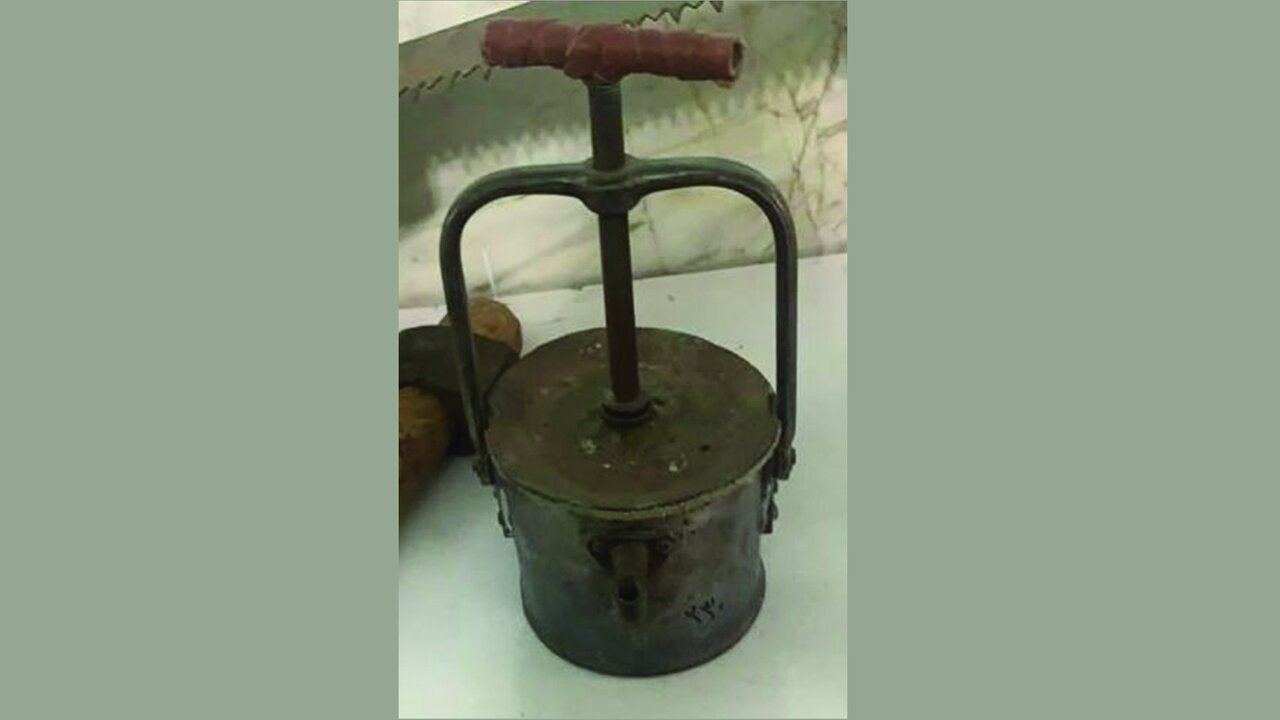A relic of Karizi civilization

This is a photo of a carbide lamp. A lamp that was linked to our great and ancient civilization, which was founded on Karizs (or aqueducts, a way that is dug underground to direct underground water to the surface of the earth).
Few people may have thought that how was it possible to dig Qanat or Kariz and extract water from several miles underground? And those who spent many days underground and built aqueducts, in the dark underground, with what tools did them see their surroundings and recognize their path?
It was a carbide lamp that lit their way underground. Our ancestors realized that burning a lamp under the ground, which is lit with tallow or oil, burns the air and life is no longer possible there. Therefore, a lamp should be lit under the ground that does not destroy the air.
The solution for this was carbide stone, which was called Karpeit stone in the speech of the local people. The stone was obtained from mines and used in the carbide lamp. A stone that burned and gave light.
The lamp had a chamber that was filled with carbide stones. The rod above the chamber was twisted to close the door. When the Kariz digger was stepping into the corridor of Kariz, he was pouring a cup of water on the stones of the chamber and waited for a gas to rise from the mixture of stones and water. The gas came out of a small tube in the body of the chamber and ignited by striking a match. For hours, the fire came out of the pipe and lit the path of the well borer. The carbide fire would not be extinguished until the stock of stone in the chamber was exhausted. Then the Kariz digger would pour some stone from his bag into the chamber and set it on fire again and continue the work.
Those who worked in Kariz knew that the carbide stone should not come into contact with water. Because it could catch fire at once and cause great damage. In this way, they were making sure that the bag of carbide stone that they had taken with them into Kariz remained dry.
Later, carbide stone was used in welding and it was called carbide welding. Carbide welding was a form of exploitation of carbide stone that evolved and was used in the age of industry. What happened in the pre-industrial era had another value, which was the result of the knowledge and experience of our ancestors. A large part of Iran's history has lived and remained on the basis of Kariz. Kariz civilization is one of the pride of mankind.
(Dr. Seyedhossein Hosseiniseddiq is an assistant professor of history at Islamic Azad University)
AM
Leave a Comment